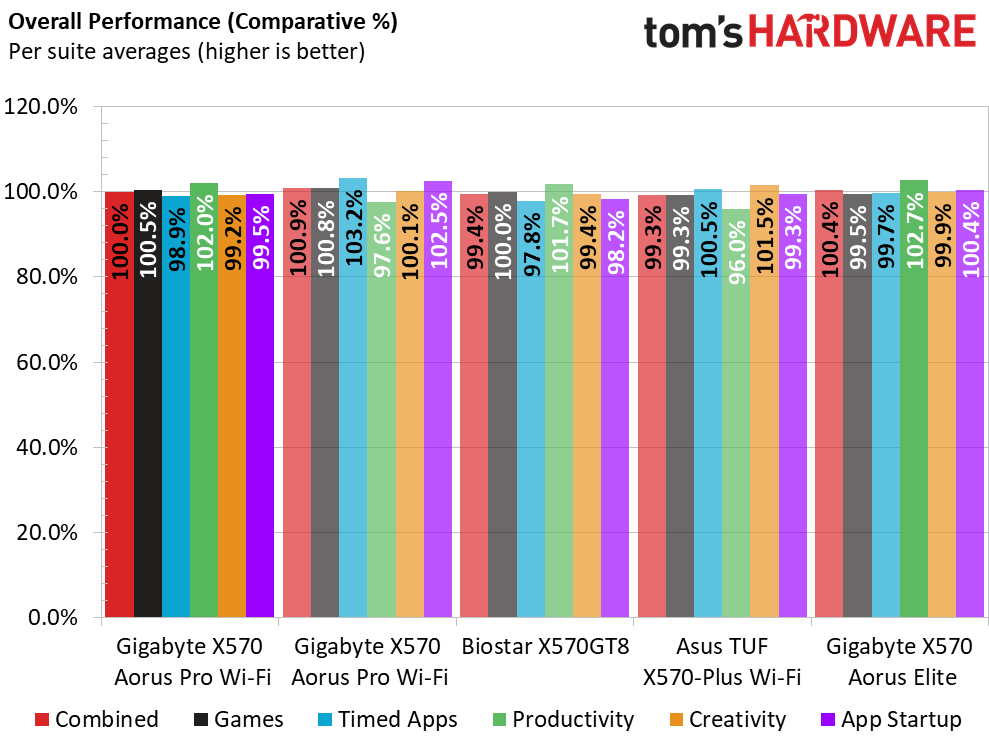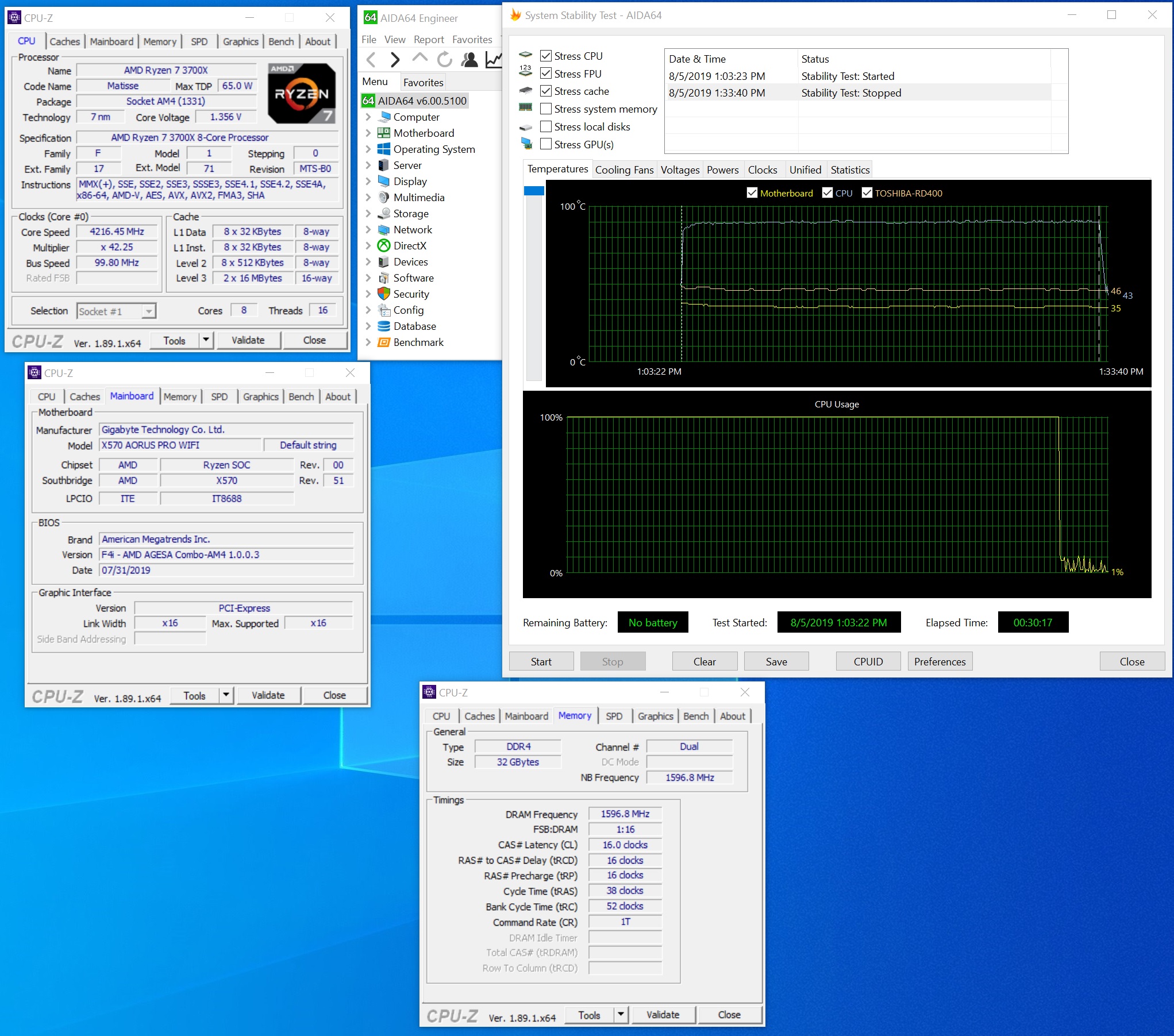Gigabyte X570 Aorus Pro Wi-Fi Review: Well-Rounded Value
Why you can trust Tom's Hardware
Benchmark and Final Analysis
All standard benchmarks and power tests are performed using the CPU’s stock frequencies (including stock AMD Turbo), with all of its power-saving features enabled. Optimized defaults are set in the BIOS and the memory set manually to run at DDR4 3200 MHz (the base spec for Zen 2) @ 16-18-18-38 primary timings.
Synthetic Benchmarks
Synthetics are a great tool to figure out if a board is running out of spec, as identical settings should produce extremely similar performance results. Advanced memory timings are the one place where motherboard makers can still optimize for either stability or performance though, and those settings can impact some testing.
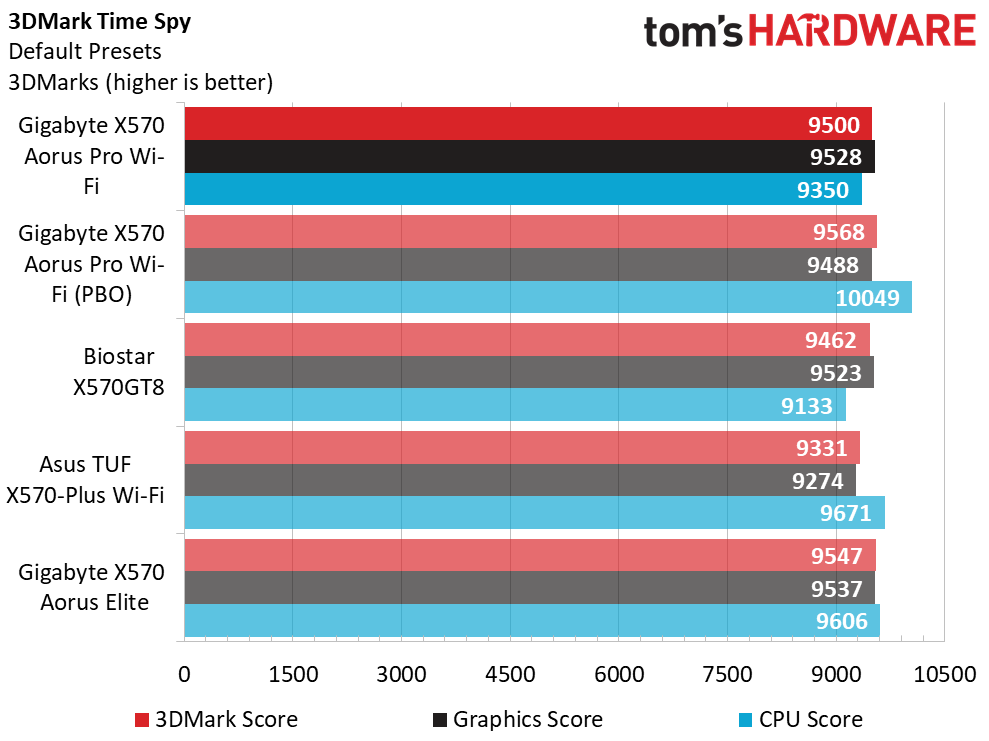
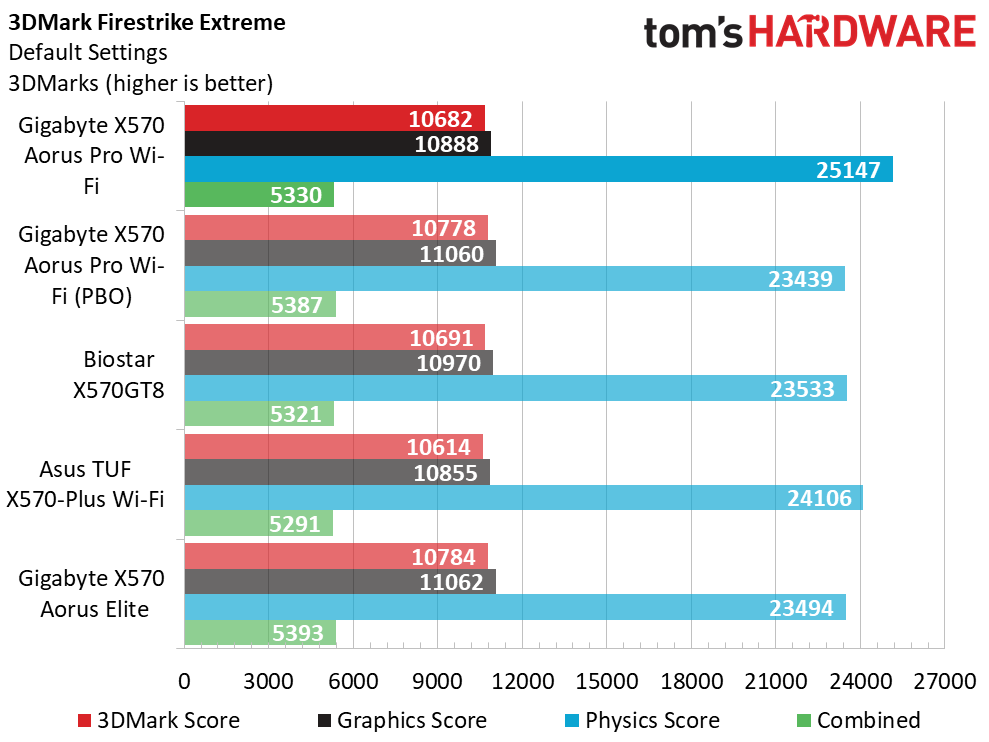
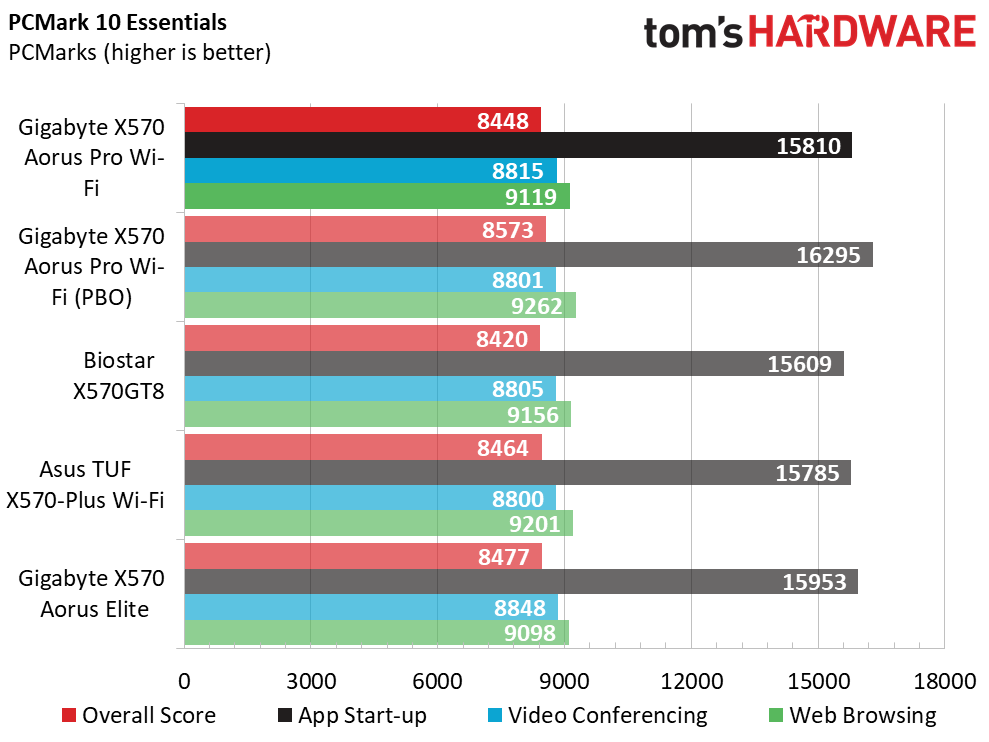
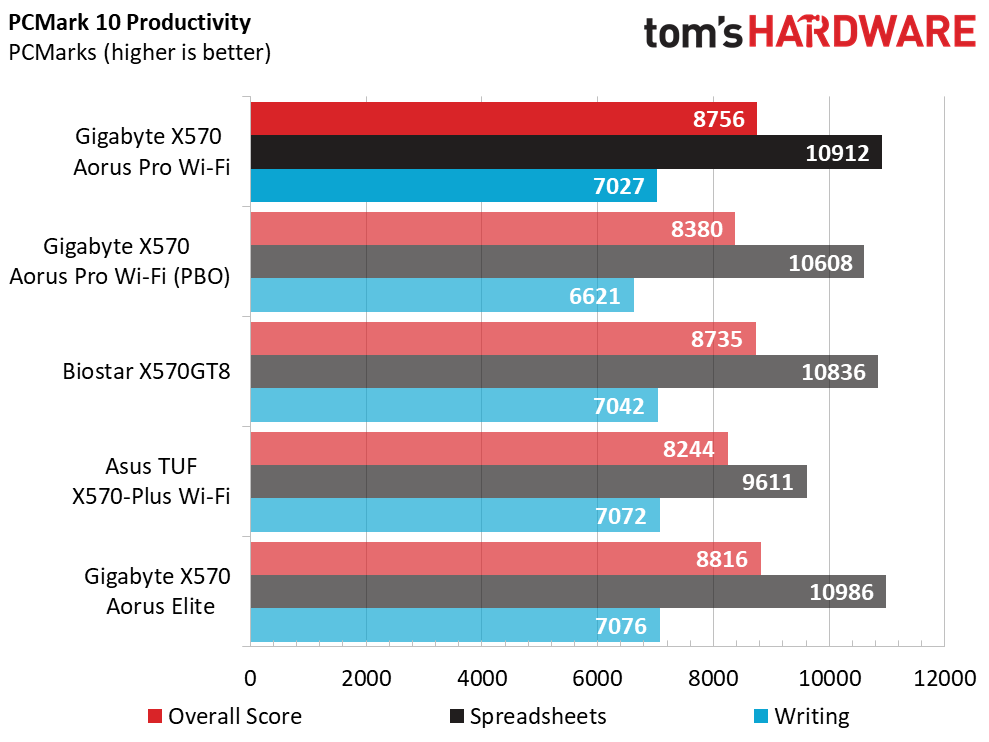
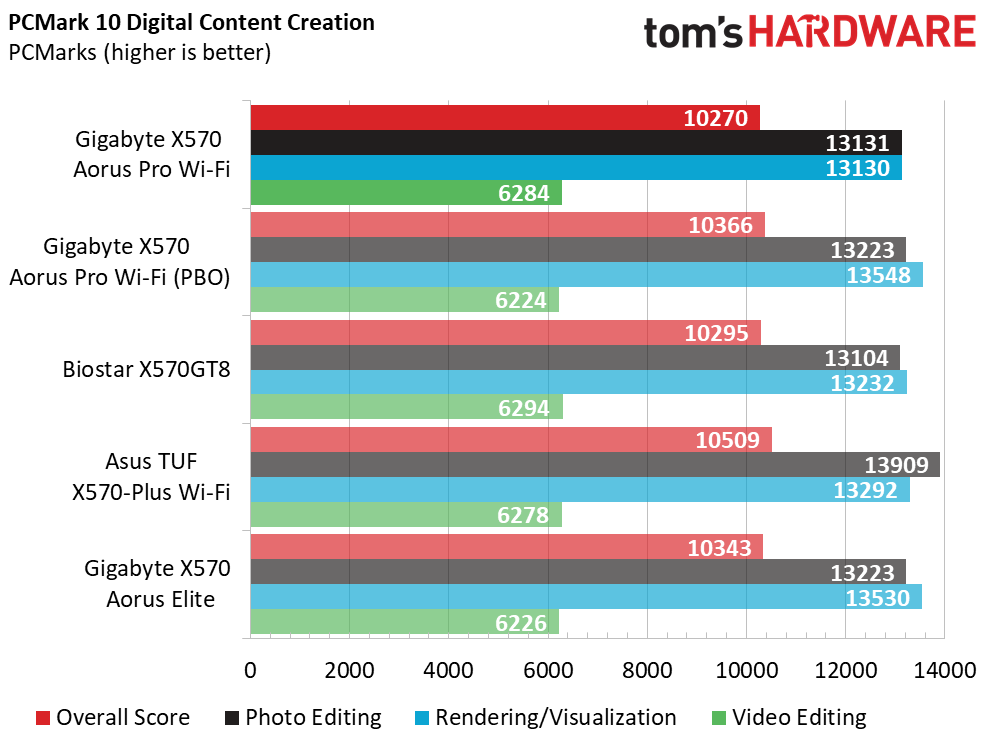

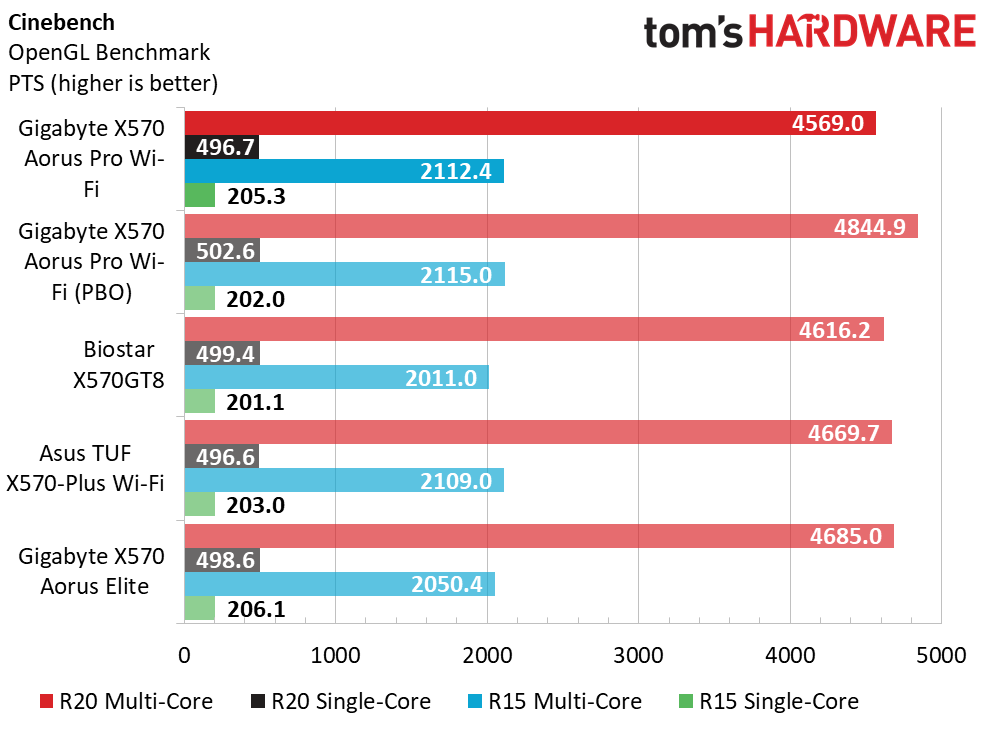
In our synthetic set of tests, the Gigabyte X570 Aorus Pro Wi-Fi performed well, mixing it up with the other X570 motherboards. All results were within general run variance difference with no anomalous data points. The Aous Pro Wi-Fi exeled in productivity testing, running 2% faster (which isn’t much, but that was the biggest anomaly). In general, Percision Boost Overdrive (PBO) showed some improvement across most tests, but managed to choke in productivity, running slower than stock form.
3D Games
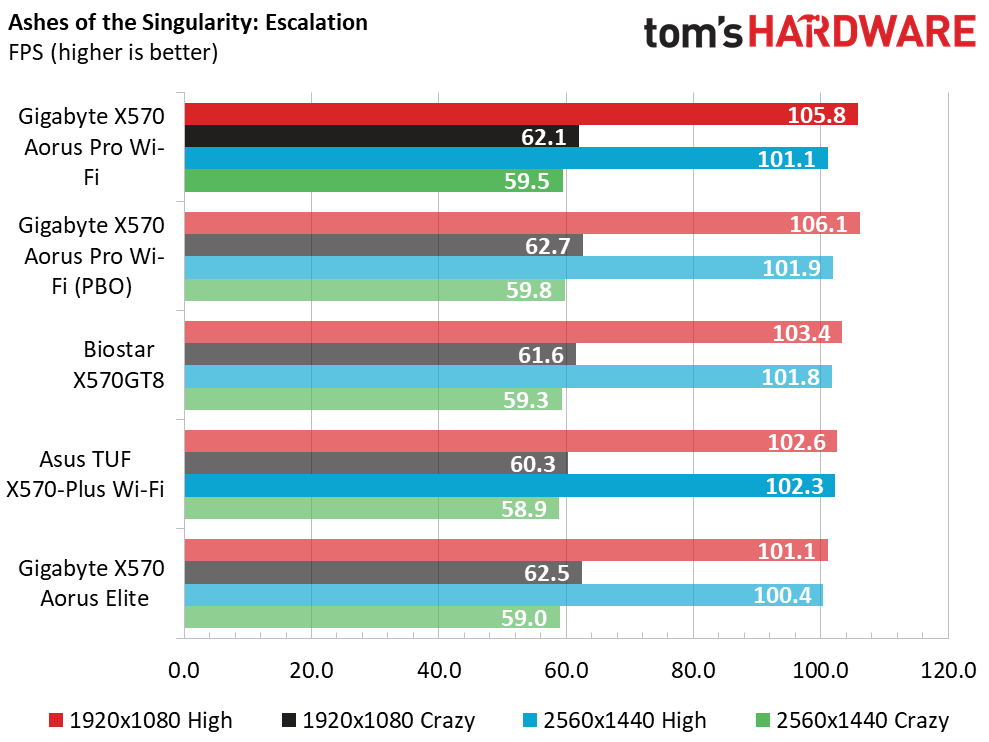
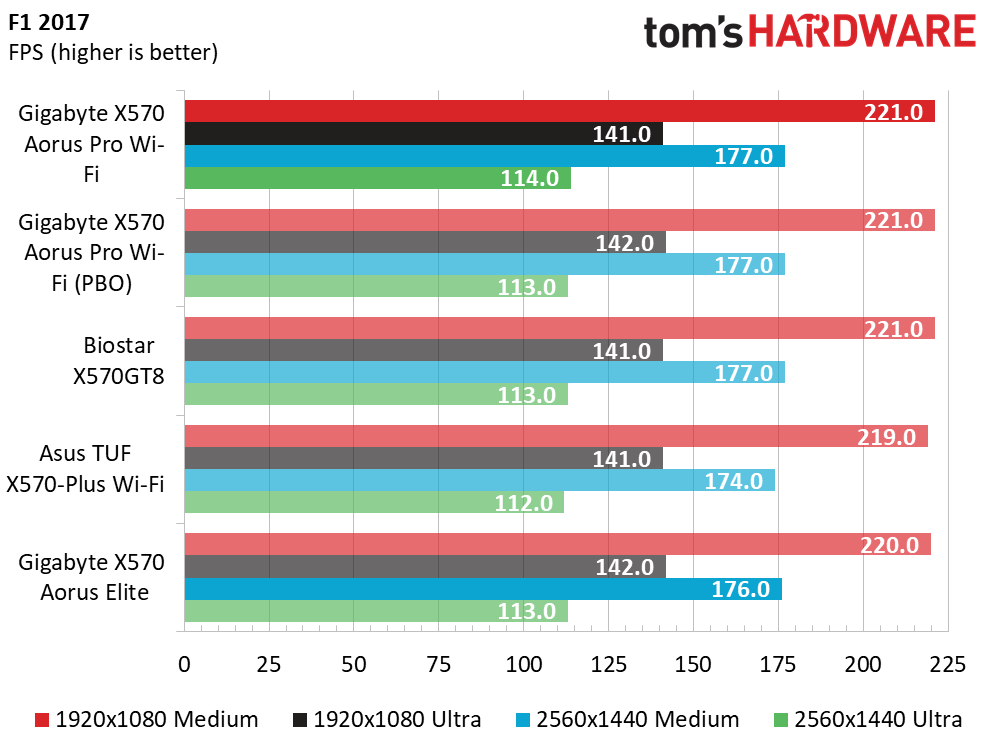
Our game results have continued to show minimal differences. PBO didn’t do much for gaming, jut as we saw with other X570 results.
Timed Applications

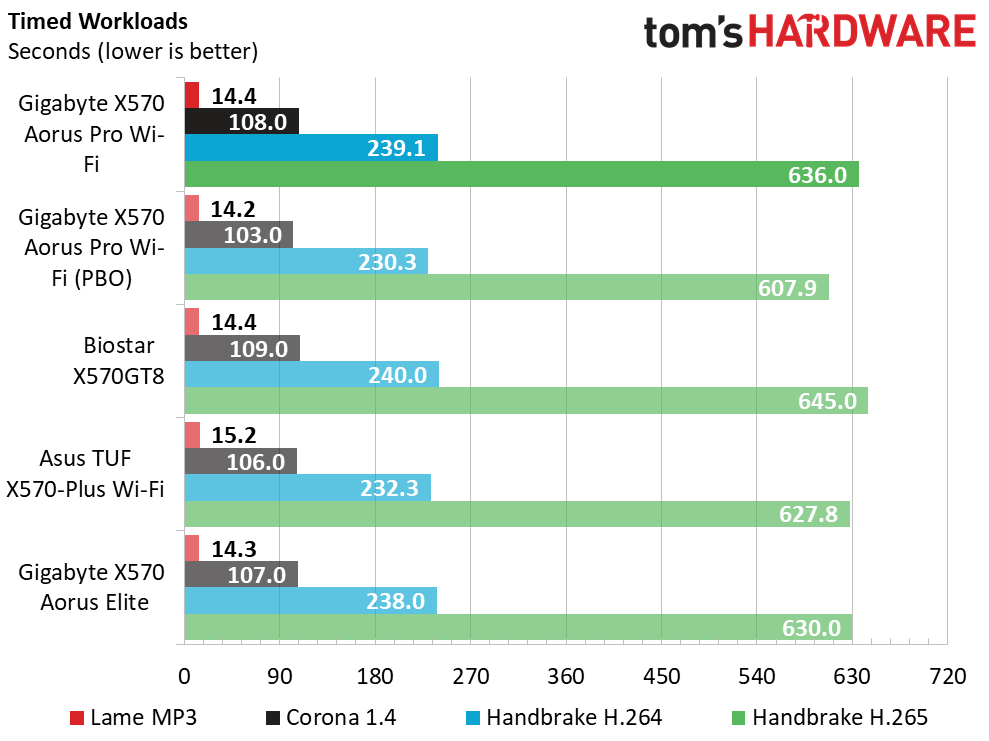
The timed applications also show little difference between the boards in optimized default form. Enabling PBO showed some improvements here, performing on average a bit over 3% better than stock in these tests.
Overall Performance
Overall performance differences between the boards we tested were not much at all. The Aorus Pro Wi-Fi performed well, with marks mixing in with the X570 family we’ve tested. PBO yielded an ever so slight performance advantage overall, though the productivity result with it enabled was 2% lower -- thanks for helping, PCMark! The key here is if PBO is worth the power increase for what amounts to barely measurable performance increases overall.
Power & Relative Energy Efficiency
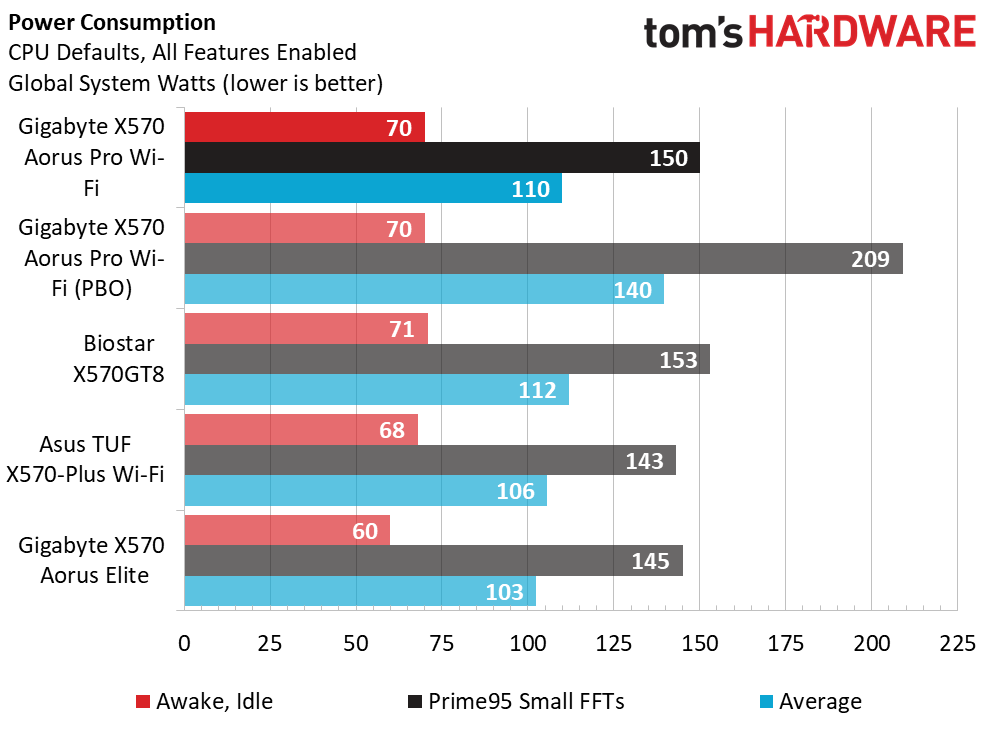
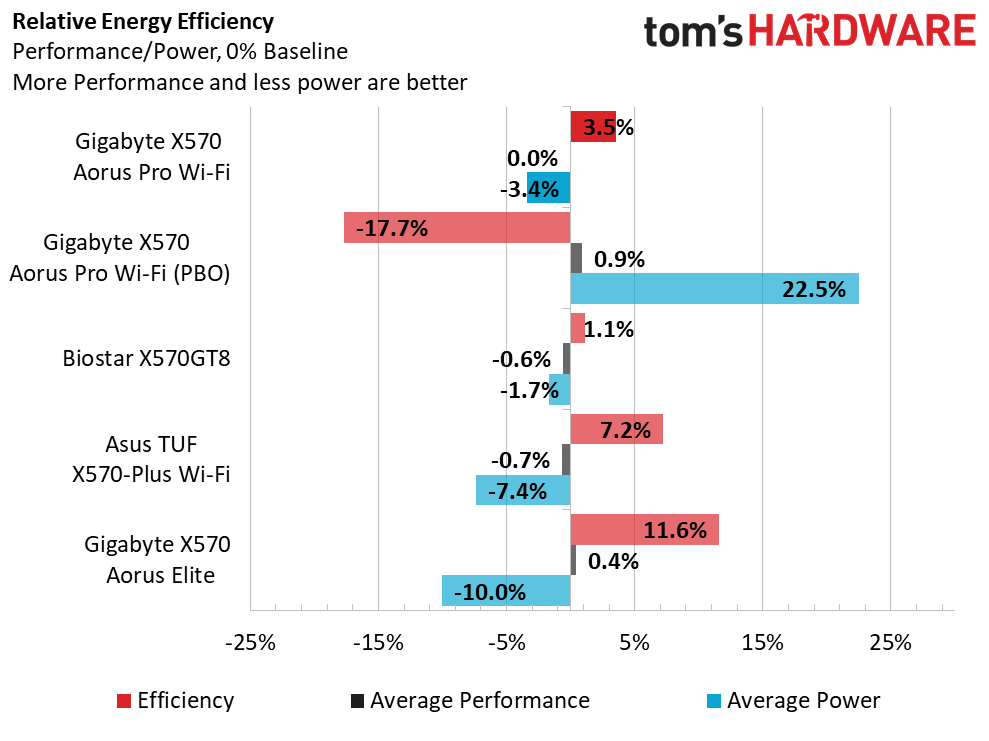
Idle power use for the Pro Wi-Fi was at 70W, even with PBO enabled. Previous reviews had this board at 80W, but we have since added the latest BIOS and AGESA, which helped our idle power draw . Load wattage hit 150W from the wall at stock, while with PBO we saw almost 210W.
Get Tom's Hardware's best news and in-depth reviews, straight to your inbox.
The overall efficiency is 3.5% better than the average, but will be hardly noticeable in performance or on your electric bill. Enabling PBO kills that with a large 22% power increase for no overall performance increase in this testing.
Overclocking
Overclocking our Ryzen 7 3700X CPU on the X570 Aorus Pro Wi-Fi turned in a result of 4.216 GHz at 1.35V when using the 42.25x CPU multiplier. It reads 4.216 instead of 4.225 GHz due to the BCLK and spread spectrum floating mostly around 99.8 MHz. I tried to run 42.75 multiplier at the same voltage and it failed 24 minutes into the stress test -- so close! Adding more voltage would have pushed the temperature up well over the 90C where it peaked at the lower setting, so this was the end of the overclocking road. This result is comparable to the other X570 boards we’ve tested recently.
Voltages when overclocking were relatively stable. With LLC set to auto, we set 1.35V in the BIOS and received 1.30V when under load. Setting LLC to Turbo eliminated the vdroop, bringing the voltage to 1.356V on load (according to CPUz).
On the memory side of things, our Aorus Pro Wi-Fi with the latest BIOS (F4i dated 7/31) didn’t have any issues running 32GB at CL16. It set the 1:1 ratio as expected with this speed and setup.
In the end, the board took our CPU where the other boards did and at similar voltage levels. We think a board with a better VRM may be able to take this CPU a bit further, but have so far been thwarted in our efforts at this level. We’ll be looking at some higher-end X570 offering soon. Perhaps those will be able to push this CPU more.
Final Thoughts
Our Gigabyte X570 Aorus Pro Wi-Fi went through all of our tests without issue at stock (optimized defaults) as well using PBO. Our overclocking went without issue as well, with the board able to support our 3700X CPU just as well all the others before it, topping out at the same 42.25x multiplier.
Features wise, the Pro Wi-Fi runs the gamut for a model in this price range, including both front and rear (Type-C port) USB 3.1 Gen 2 capabilities (along with eight other USB ports), heatsinks both of the M.2 slots, Realtek ALC 1220-VB premium audio, seven fan/pump headers and a robust VRM and heatsinks, plus Wi-Fi. I would like to have seen eight SATA ports, as there are “just” two M.2 ports. But then it’s unlikely many builders will try to shove more than eight drives into a board that borders on budget territory (for X570).
The Aorus Pro Wi-Fi looks good in all black and has a tasteful implementation of RGB LEDs. If what is integrated isn’t enough, four additional RGB headers are ready for more blinking lights. And the primary PCIe slots are wrapped in Gigabyte Armor, a nice contrast against the other black parts -- so long as you can see them.
The BIOS is easy to work with and has all the options an overclocker needs to take their CPU and to its thermal limits. Our GSkill Neo memory, all 32GB at DDR4 3600, also worked without issue and is plug and play with this BIOS.
In the end, the Gigabyte X570 Aorus Pro Wi-Fi checks all the boxes for a capable motherboard, and then some for its price point. It’s one of the only boards in this class which includes both rear IO and front panel USB 3.1 Gen 2 support. So if that’s a requirement, this is the motherboard to do it. If that isn’t a requirement, there are less expensive options worth considering. But for the money, the X570 Aorus Pro Wi-Fi should be on your short list in the $250-$270 X570 price bracket.
Image Credits: Tom's Hardware
MORE: Best Motherboards
MORE: How To Choose A Motherboard
MORE: All Motherboard Content

Joe Shields is a staff writer at Tom’s Hardware. He reviews motherboards and PC components.
-
Giroro I'm pretty surprised to see an Editor's Choice award go to a "low to mid-range" motherboard that costs an insane $270.Reply
Is price no longer a factor for that award? I thought it was supposed to reflect that a product is a good/best value for consumers.
It's one thing to charge a little bit extra an early-adopter tax for PCIe 4.0... but over double what the boards with the previous top-tier chipset cost just for a feature that almost nobody can use right now? I mean, come on. It's not like anybody would have accepted a $100+ price hike and a cheap chipset fan for a mobo with SATA express.
